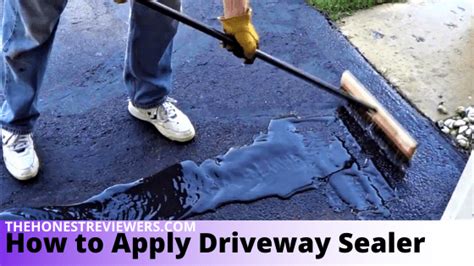Driveway Sealer Drying: A Step-by-Step Tutorial
Maintaining a pristine driveway enhances your home's curb appeal and protects your investment. Applying a sealant is a crucial step in this process, but knowing how long it takes to dry and how to handle the drying process is equally important. This comprehensive guide provides a step-by-step tutorial on driveway sealer drying, ensuring you achieve a long-lasting, beautiful finish.
Understanding Driveway Sealer Drying Times
Before diving into the application process, understanding the drying time is crucial. Several factors influence how long your driveway sealer takes to dry:
-
Type of Sealer: Water-based sealers generally dry faster than oil-based sealers. Water-based sealers might be dry to the touch within a few hours, while oil-based sealers can take significantly longer, sometimes up to 24 hours or more. Always check the manufacturer's instructions on the specific product you've chosen.
-
Weather Conditions: Temperature, humidity, and sunlight all impact drying time. Hot, dry, sunny conditions accelerate drying, while cool, humid, or overcast weather can significantly slow it down. Wind can also help with evaporation for water-based sealers.
-
Sealer Application: A thicker coat of sealer will naturally take longer to dry than a thin, even coat. Avoid over-application to minimize drying time.
Step-by-Step Driveway Sealer Drying Process
1. Preparation is Key: Before even thinking about applying the sealer, ensure your driveway is clean, dry, and free of debris. Sweep or pressure wash the surface thoroughly to remove dirt, oil stains, weeds, and loose particles. This ensures proper adhesion and prevents imperfections in the final finish. Repair any cracks or chips before applying the sealer.
2. Applying the Sealer: Follow the manufacturer's instructions meticulously. This usually involves using a brush, roller, or sprayer for even coverage. Work in sections to ensure you don't miss any spots and apply a consistent layer.
3. Monitoring the Drying Process: After application, regularly monitor the drying process. This is where the weather conditions come into play. Check the sealer's manufacturer instructions for recommended drying times under varying conditions. Avoid walking on the driveway until it's completely dry to the touch, usually several hours for water-based sealers and longer for oil-based ones.
4. Avoiding Foot Traffic: This is critical! Foot traffic before the sealer is fully cured will mar the surface, leaving footprints and potentially damaging the seal. Use caution for the specified drying time in the instructions. Consider setting up temporary barriers or signage to keep people and vehicles off the driveway.
5. Post-Drying Care: Once the sealer is completely dry (often indicated by a lack of tackiness and a matte finish), you can resume normal use of your driveway. However, it's advisable to avoid heavy loads or harsh chemicals on the newly sealed surface for a few days to allow for complete curing.
Frequently Asked Questions (FAQs)
How long does driveway sealer take to dry completely?
The drying time varies greatly depending on the type of sealer (water-based or oil-based), weather conditions (temperature, humidity, sunlight), and the thickness of the applied coat. Always check the manufacturer's instructions for precise drying time estimates. Generally, water-based sealers dry faster (a few hours) than oil-based sealers (up to 24 hours or more).
What happens if it rains while my driveway sealer is drying?
Rain during the drying process can significantly compromise the seal's effectiveness. The rain can dilute the sealer, leading to an uneven finish, reduced durability, and a shorter lifespan. If rain is forecast, postpone the application.
Can I drive on my driveway after sealing?
No, you should absolutely avoid driving or parking on your driveway until the sealer is completely dry to the touch and fully cured, as specified by the manufacturer's instructions. This usually takes several hours or even a full day or more depending on the type of sealer and weather.
My driveway sealer is still sticky after 24 hours. What should I do?
If your driveway sealer remains sticky after the manufacturer's recommended drying time, it might indicate that the sealer wasn't applied correctly (too thick a coat) or that the weather conditions were unfavorable (high humidity, low temperature). Check your sealer's instructions for troubleshooting tips, or contact the manufacturer for assistance. In some cases, re-application might be necessary.
How can I speed up the driveway sealer drying process?
While you can't drastically alter the chemical drying process, you can improve drying conditions. Applying the sealer on a warm, sunny, and dry day will significantly accelerate drying time. Ensure adequate ventilation and avoid over-application.
By following this detailed guide and paying close attention to the drying process, you can ensure your driveway sealer achieves optimal performance, giving you a durable, beautiful, and long-lasting finish. Remember to always refer to the specific instructions provided by your chosen sealer's manufacturer for the most accurate and reliable information.

